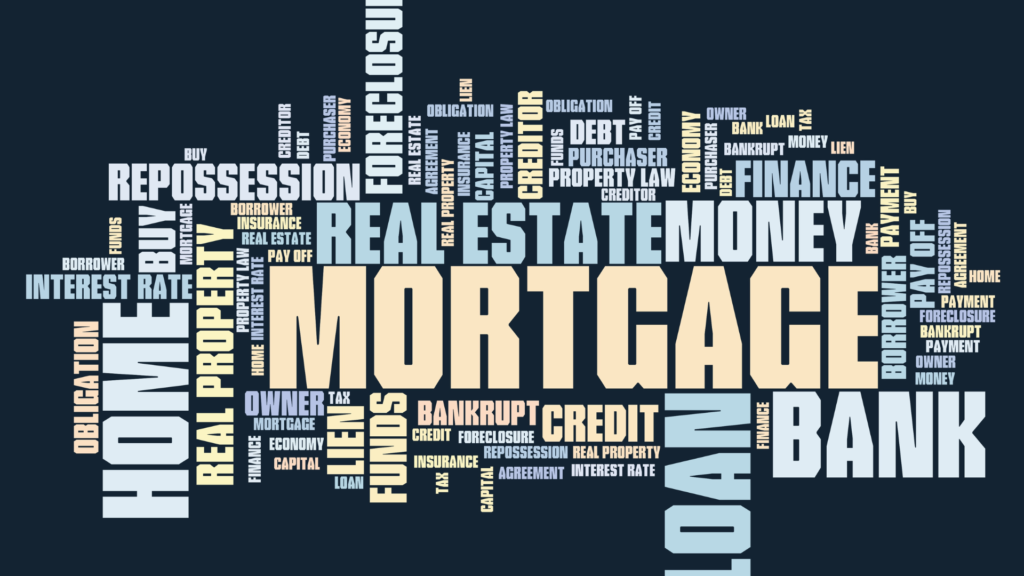A mortgage is a loan used to purchase a property, such as a house or a piece of land. It is a legal agreement between the borrower and the lender, typically a bank or a financial institution. The borrower agrees to make regular payments, including interest, over a specified period, often spanning several decades. Mortgages are secured by the property itself, meaning that if the borrower fails to make the required payments, the lender has the right to take possession of the property through a process known as foreclosure.
The mortgage industry is intrinsically linked to the real estate market, as mortgages are the primary means through which most people finance the purchase of a home or other property. Real estate agents and brokers play a crucial role in helping buyers understand the mortgage process and find suitable properties within their budget. They have access to extensive listings and can provide valuable insights into local market conditions, property values, and potential investment opportunities. Additionally, there are online platforms and real estate websites like https://peregrinecolorado.com/ that usually allow users to search for properties, compare mortgage rates, and connect with reputable lenders and real estate professionals.
Mortgage jargon-busters are, by now, fairly familiar. But, as with all similar lists, there’s always room for more. Here are some of the most common mortgage terms and their definitions.
Amortization
Amortization refers to the process of paying off a mortgage loan over time through a series of scheduled, recurring payments. With each payment made towards an amortizing loan, a portion goes towards paying the interest owed, while the remaining amount contributes to reducing the outstanding principal balance. As you continue making these payments, a gradually larger fraction gets applied to the principal. Amortization schedules map out exactly how funds from each payment are allocated between interest and principal over the entire loan term until the full amount is paid off.
Appraisal
An appraisal is a professional estimation of a property’s fair market value. Conducted by a licensed and certified appraiser, an appraisal critically analyzes factors like the home’s location, condition, age, size, recent comparable sales in the area, and other elements that influence worth. Appraisals protect both buyers from overpaying and lenders from lending more than a property’s value. They provide an objective, third-party opinion to ensure a reasonable sale price.
Adjustable-Rate Mortgage (ARM)
Unlike fixed-rate loans, an adjustable-rate mortgage (ARM) has an interest rate that can fluctuate over the loan’s lifetime. The rate is tied to a benchmark index like the prime rate or LIBOR and adjusts up or down at preset intervals as that index changes. ARMs typically start with a lower introductory rate but carry more long-term risk as rates could rise substantially. To limit payment shocks, ARMs have caps limiting how much the rate can change per adjustment period or over the full loan.
Closing
Closing is the final step in a real estate purchase, where the property’s ownership officially transfers to the buyer. For instance, if you’re buying a property, you might visit a real estate developer’s website like lambiehomes.com, or work with an agent to find a suitable home. After finding the right property, you’ll pay the agreed-upon amount to the seller. During the closing meeting, the buyer will likely sign the mortgage documents, and any remaining funds, like the down payment, will be given to the seller. The buyer also covers various closing costs such as lender fees, title insurance, property taxes, and the first year’s homeowners insurance premiums. Once all documents are signed and funds are exchanged, the sale is complete, and the buyer receives the keys to the property.
Credit Score
A credit score is a three-digit number that summarizes an individual’s track record of repaying debts and managing credit responsibly based on their credit report data. Credit scores heavily factor payment history, amounts owed, length of credit history, new credit accounts opened, and credit mix. Lenders use scores to assess lending risk, with higher scores granted the best interest rates and terms. FICO and VantageScore are two popular commercial credit scoring models used by lenders and creditors.
Debt To Income Ratio
The debt-to-income (DTI) ratio calculates what percentage of an individual’s monthly gross income goes towards recurring debt payments like mortgages, auto loans, student debt and credit cards. It helps lenders determine if applicants can truly afford to take on a new mortgage on top of existing obligations. A lower DTI ratio is preferable, with most lenders capping total DTI at 43% of income. DTI is a key factor assessed during the mortgage qualification process along with credit scores, down payments and other criteria.
Escrow
In real estate transactions, an escrow is a legal arrangement where an impartial third party called an escrow holder temporarily keeps payment funds or property ownership documents until all conditions of an agreement are met. For example, a buyer’s earnest money deposit would be safely held in escrow until the closing is finalized. Escrow accounts managed by the escrow holder ensure all terms of the contract are satisfied before transferring money and title to the appropriate parties. This protects both buyers and sellers.
Equity Release
Equity release is a way for retired homeowners to unlock a portion of their property’s value without selling it, often through options like reverse mortgages or home reversion plans available through companies providing Equity Release in Suffolk (or wherever one prefers).
Fixed Rate Mortgage
With a fixed-rate mortgage, the interest rate remains constant over the entire repayment term, resulting in consistent principal and interest portions each month. Rates are often higher initially than adjustable loans, but homeowners are shielded from potential hikes over the 15, 20 or 30-year duration. Fixed mortgages transfer interest rate risk to the lender in exchange for payment stability. This appeals to borrowers valuing predictability over potential savings.
Interest Rate
The interest rate is the cost of borrowing money from a lender expressed as an annual percentage rate (APR) of the principal amount. Interest rates factor several components including an index rate, lender fees and borrower risk assessments. The interest portion paid along with each scheduled payment compensates the lender for their risk in lending money. Interest rates directly impact the overall borrowing cost over the loan term. Both interest rates and APRs should be compared between lenders.
Loan
In general, a loan is when a bank, credit union, or online company such as this one offering Hard Money Loans Miami, gives money to a borrower, who then has to pay it back with interest over a set period, usually monthly. Loans can be secured by things like homes or cars, or unsecured based only on creditworthiness. The lender charges interest and fees to cover their risk, while the borrower gets access to a larger amount of money than they could afford upfront. Loans are useful for big purchases, but borrowers have to make sure they can repay them on time.
Mortgage Broker
A mortgage broker acts as a middleman between borrowers looking for loans and banks or lenders who can provide mortgage financing. You can get various types of mortgages, such as barrister mortgages with LDN Finance or other companies, where brokers can assist you. They collect detailed information from applicants and search through different lending partners to find competitive rates and programs that match each client’s requirements and qualifications. Their expertise in the mortgage market and access to multiple lenders’ loan options simplify the process for borrowers. Brokers earn commissions from lenders for arranging loans.
Negative Equity
Negative equity, also known as being “underwater” on a mortgage, refers to the situation where a borrower owes more on their home loan than the property is currently worth on the market. This predicament most often arises after a significant drop in local real estate values. With negative equity, selling or refinancing can be extremely difficult without paying the remaining loan balance upfront. It leaves homeowners with limited options until hopefully regaining equity as the market recovers.
Offset Mortgage
An offset mortgage links a conventional mortgage to a dedicated savings account, with the money held in the linked savings partially offsetting the loan balance for calculating interest charges. The remaining mortgage debt beyond the savings balance continues accruing interest normally, but by offsetting the savings portion from that total, the borrower pays less interest than they would otherwise. Offset mortgages can provide substantial interest savings and tax advantages in some areas over the loan lifetime.
Rate Lock
A mortgage rate lock is a lender agreement that allows borrowers to secure or “lock in” a specific interest rate for an established time period like 30, 45 or 60 days once approved. Also called a lock-in, this protects the borrower from potential interest rate increases in the interim period before closing on the home purchase. There is usually a cost or premium paid to the lender in exchange for rate lock protection. Locks provide insurance against rising rates during the transaction window.
Shared Ownership
Under a shared ownership mortgage arrangement, homebuyers purchase a stake or percentage of a property rather than the full value upfront. The remainder is retained by an approved shared ownership company or housing association. This allows buyers to get in the door with a lower down payment by purchasing just a 25-75% share initially. They pay mortgage costs on their owned portion and rent on the remaining share. Over time, owners can purchase additional equity increments and eventually own 100%.
Stamp Duty
Stamp duty is a tax levied by governments on the purchase prices or market values of properties above certain thresholds. The stamp duty rate rises incrementally based on the sale price or home value, with higher-cost properties facing higher tax rates. Stamp duty transfers must be paid upfront by the buyer to the tax authority as an added closing cost, making the fees a significant factor impacting housing affordability. Some exemptions or concessions for first-time buyers exist in certain areas.
Tracker Mortgage
With a tracker mortgage, the variable interest rate directly mirrors the movements of an established external interest rate index or benchmark, such as the central bank’s base rate. This differs from standard variable rate mortgages which allow lenders to adjust rates independently. While tracker rates provide transparency by aligning with index shifts, they also carry the risk of payment impacts from rising benchmark rates over time. Nevertheless, many borrowers prefer the certainty trackers offer compared to lenders’ discretionary standard variable rate pricing.
Variable-Rate Mortgage
Variable-rate or adjustable-rate mortgages (ARMs) have interest rates pegged to a certain financial index like the prime rate, LIBOR, or SOFR that resets periodically, meaning the rate can fluctuate up or down over the loan term. These provide a lower initial rate versus fixed options but present uncertainty around future payment costs if indexes trend higher. ARMs therefore carry more risk but also opportunity for greater interest savings if rates stay low or decline. Some versions include rate caps to limit extreme payment swings.
Trying to decipher a confusing mortgage term or acronym can be a frustrating experience. So, many of today’s mortgage terms have evolved from more precise, more descriptive terms. While mortgage jargon may be complex, knowing the basics can help you understand the mortgage process.

